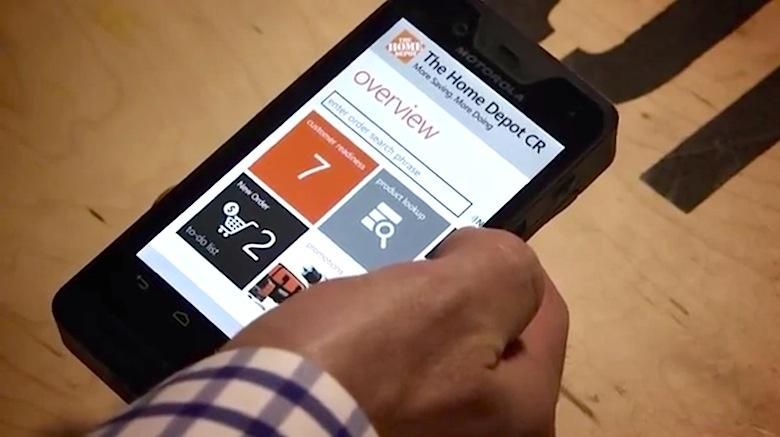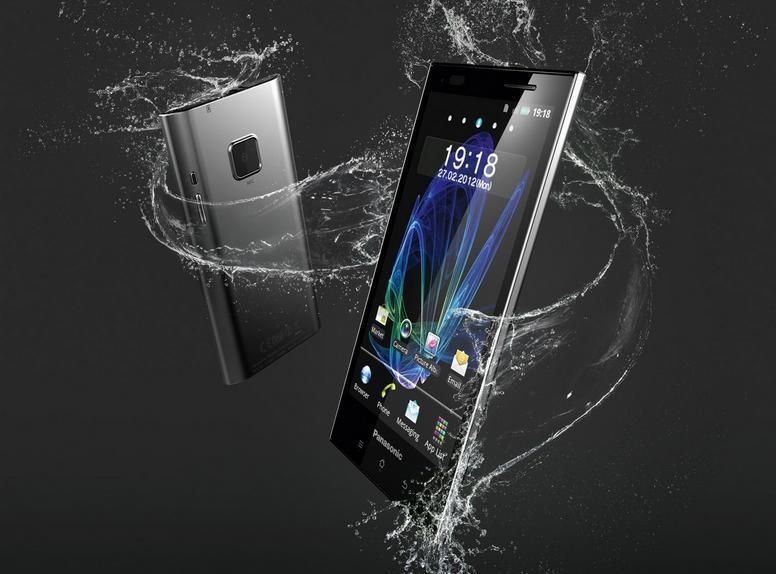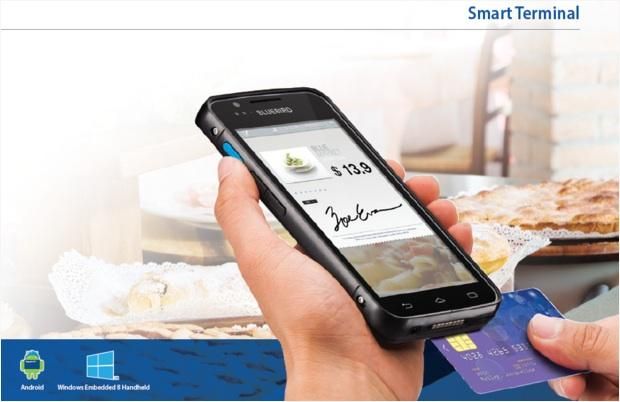Most people closely relate mobile enterprise solutions with BlackBerry. And rightly so. The company formerly known as Research In Motion dominated the mobile enterprise industry for well over a decade. But the company has since slipped from its glory days. Ever since, others have stepped up to fill the gap and the mobile enterprise industry has evolved itself into a vastly different beast.
Mobile enterprise devices are no longer just for email or handling light work on the go. Mobile devices are now used as point of sale (POS) systems, vital retail sales floor tools, and much more.
Last week at the National Retail Federation (NRF) EXPO in New York, Microsoft showcased an array of new services. To be more specific, it showed off its latest Windows Embedded 8 platforms and retail solutions. Among those were Windows Embedded 8 Handheld, hardware partnerships, and even one working example with The Home Depot. Ever since, we’ve seen a few Windows Embedded 8 Handheld devices confirmed.
Last week, Panasonic confirmed its 5-inch Windows Embedded 8 Handheld.
But what is Windows Embedded 8 Handheld, exactly? How does it differ from the consumer-based Windows Phone 8?
To answer the latter question, they’re very similar, particularly in appearance. Windows Embedded Handheld has been around for quite some time. The most recent version, Windows Embedded 8 Handheld, is simply built upon Windows Phone 8 instead of Windows Mobile.
The difference, of course, is who these two products are marketed towards, what they’re capable of, and what sort of hardware they will run on.
Obviously, Windows Phone 8 is a consumer platform, targeting the mass consumer market.
Windows Embedded 8 Handheld, on the other hand, is for enterprise purposes – primarily (at least in the demonstrations shown) retail level. Being based on Windows Phone 8, Windows Embedded 8 Handheld will have access to any and all applications available to the consumer line of products, though access can and will be limited by the enterprise admins. They will also support off-the-shelf Windows Phone apps (Microsoft Lync, Office 365, Dynamics for Retail, etc.), as well. It also shares the same tile-based UI found on WP8, though it can be lightly tailored to meet the retailers’ needs (as shown above).
The major difference will be the hardware these devices will run on. You won’t see retail associates running around with Lumias or ATIVs. Most of these Windows Embedded 8 Handhelds will be ruggedized and will come from Motorola Solutions, Intermec, Honeywell, Ingenico, and Bluebird. And they will utilize peripherals such as barcode scanners, magnetic stripe readers, and printers for receipts.
The idea is nothing terribly new or groundbreaking. It’s about Microsoft bringing its Windows Embedded program up to speed with the capabilities of Windows Phone 8. Microsoft and the few hardware partners will be putting existing technology to great, efficient use and equipping ground-level employees in retail stores with connected devices to iron out kinks in the consumer shopping experience. It’s not unlike Square or even Apple equipping retail employees with iPhones to check inventory or process transactions, except on a much broader scale with a much more general purpose.
The demonstrated Home Depot solution from NRF detailed a hypothetical customer placing an order online. The employees equipped with a Windows Embedded 8 Handheld would then receive notification of said placed order, pull the oder from inventory and hold it for the customer. If the handheld also had a magnetic stripe reader, the same employee could not only pull the order, but handle the payment transaction, as well.
Windows Embedded 8 Handheld, as expected, will tie in seamlessly with other Windows Embedded products, such as digital signage, HVAC controls, security systems, and POS systems, according to Microsoft. The Windows Embedded 8 Handheld product page on Microsoft’s website briefly details how other scenarios or jobs benefit from its latest mobile solution, too.
Package delivery – These devices allow for secure, real-time delivery records and more efficient routing.
Mobile point-of-service – Enable employees to answer a customer’s question or fulfill their need on the spot with these industry devices.
Communication and collaboration – Increase efficiency by using handheld devices to connect mobile workers in the field with in-office colleagues and back-end data systems.
Scanning and data capture – These devices enable instant inventory updates and better customer service.
So why should you care?
Overall, it’s probably not all that exciting. However, as a consumer, Windows Embedded 8 Handheld should help bring the antiquated brick and mortar shopping experience into the 21st century.
As a paying customer, there are few things more satisfying than walking into an Apple store, finding the product you want, and either paying then and there through your own iPhone or locating the nearest employee and paying, without having to follow them to a register or waiting in line. These devices will help bring other retailers up to speed and, at long last, put an end to the worst drawbacks to shopping in-store. At least that’s the plan.
According to Bluebird, which recently announced a ruggedized Windows Embedded 8 Handheld which also run Android 4.2, some unnamed, major US retailers are in line to buy its devices.
If you’re a retail sales associate, these sort of devices could soon make your life a lot easier. (I know, firsthand, the pains of working a retail floor.) No more running back to terminals to check inventory, no more dragging customers from register to register, and no more finding an open computer to look up information on a product a customer is interested in.
Consumers will likely never interact directly with Windows Embedded 8 Handheld, but that shouldn’t make it any less important or exciting. Still, it will likely be a long while before we see widespread adoption of this updated enterprise system.
Don’t hold your breath. Instead, look forward to the future of customer service in the retail industry.





